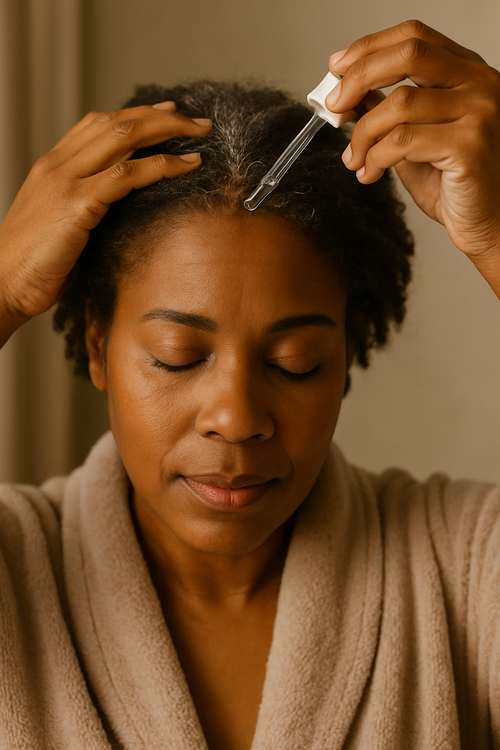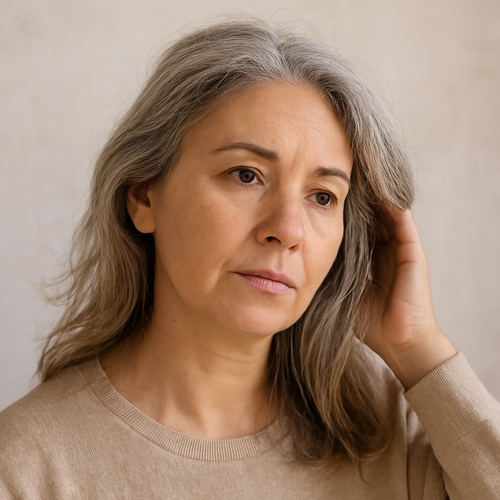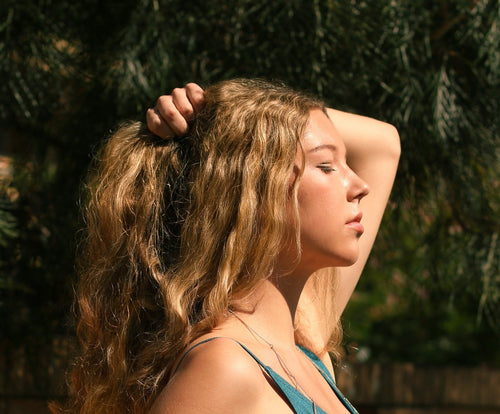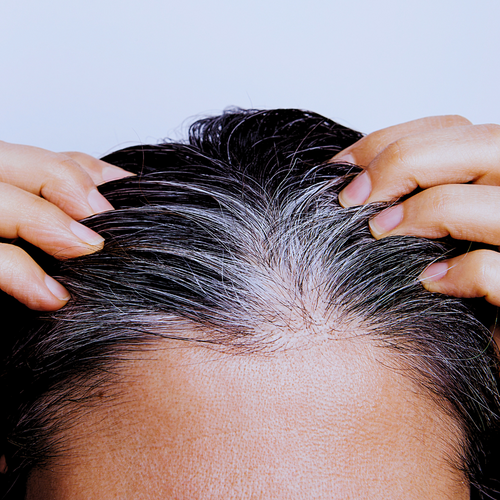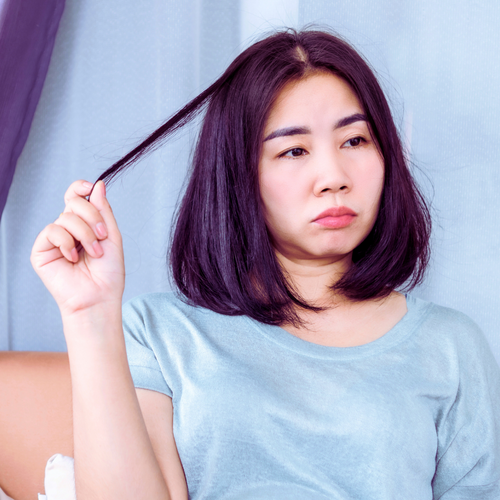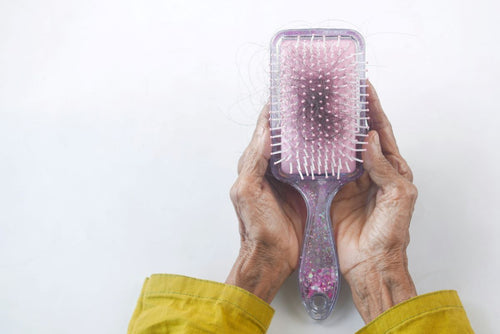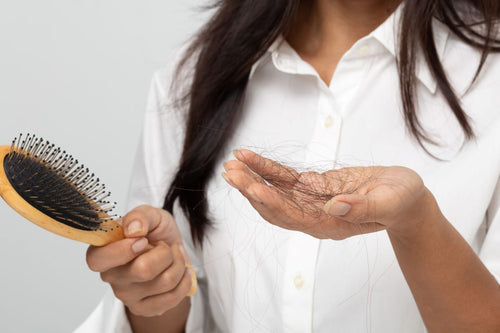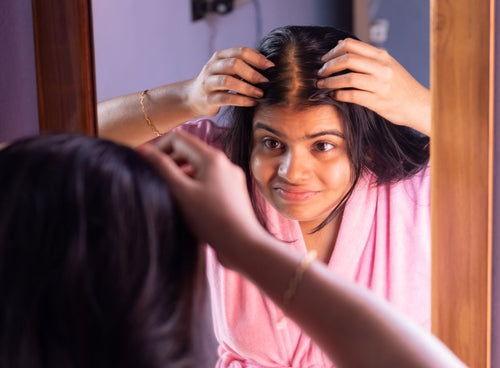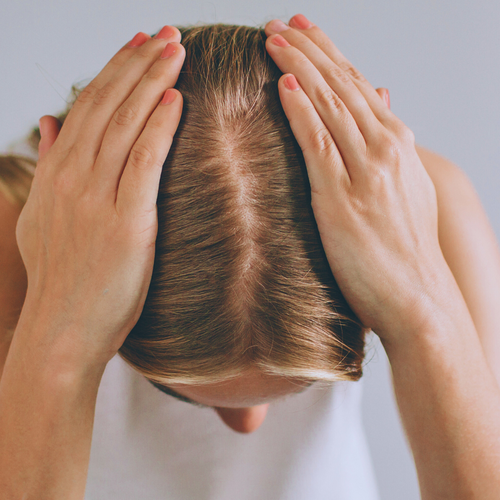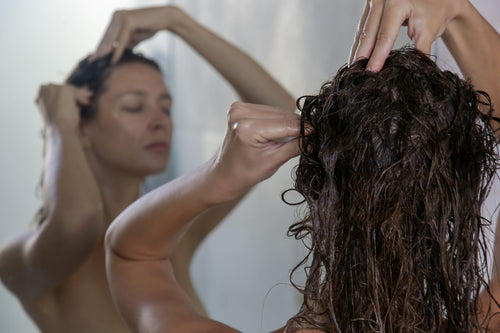Q: What is traction alopecia hair loss?
A: Traction alopecia is a very common form of hair loss that happens due to prolonged stress and tension on the hair follicles. This stress and tension can be caused by certain hairstyles that pull tightly on the hair, such as tight ponytails, braids, weaves, or hair extensions. The hair loss is not immediate, but over time, this constant pulling can damage the hair follicles and cause hair loss.
Q: What does traction alopecia look like?
A: Traction alopecia typically causes thinning or bald patches along the areas where the tension is greatest. This is usually around the front hairline and the temples. It can also be at the crown of your head or the back of your scalp.
Q: Is traction alopecia permanent?
A: The good news is that traction alopecia can be reversed if it is detected early and if the damaging hairstyles are discontinued. If traction alopecia is caught in its early stages, before the hair follicles have been permanently damaged, hair regrowth is definitely possible once the tension on the hair is relieved. However, if the traction on the hair follicles persists for an extended period, it can lead to permanent damage to the hair follicles, which can result in permanent hair loss. In these cases, the hair follicles can even become scarred, which makes it very difficult or impossible for hair to grow back.
Q: Does traction alopecia grow back?
A: Traction alopecia can grow back. Whether the hair loss grows back can depend on several factors, including the severity of the damage to the hair follicles and whether the source of traction is removed. In many cases, if the tension on the hair follicles is relieved early enough and the damaging hairstyles are discontinued, hair regrowth is possible. However, if the condition has progressed to the point where the hair follicles have been permanently damaged or scarred, hair regrowth may be limited or not possible. This is why it’s crucial to address traction alopecia promptly.
Q: How do you treat traction alopecia?
A: There are several important factors in treating traction alopecia. First, be sure to avoid any sources of tension or traction. Avoid any hairstyles or practices that are tight or cause tension on your hair follicles. Wear looser hairstyles, and try to minimize heat styling, which could weaken the hair.
Gentle scalp massage can help improve blood circulation to the hair follicles, which may help promote hair growth. Massaging the scalp with diluted essential oils like rosemary or peppermint oil may also be beneficial.
Topical medication like over the counter minoxidil (Rogaine) may help stimulate regrowth. Your doctor may also prescribe topical corticosteroids or corticosteroid injections to help reduce damaging inflammation around the hair follicles and promote growth. For more advanced cases, your physician might recommend Platelet-Rich Plasma (PRP) Therapy, which involves injecting your own platelet-rich plasma into the scalp to stimulate hair growth. There are also other invasive and non-invasive surgical treatments to camouflage hair loss.
Q: What are some at-home treatments for traction alopecia?
A: I’ve already mentioned the importance of gentle hair care and scalp massage, which can be very helpful for reducing irritation and promoting hair growth.
Hot oil treatments are another easy at-home treatment that can be helpful for people struggling with hair loss. Applying warm oil to the scalp and hair can help moisturize the hair and scalp, improve circulation, and support hair growth. You should look for antioxidant plant-based oils such as jojoba oil, almond, or avocado.
It's also important to focus on nutrition. Make sure that you’re eating a balanced diet rich in vitamins, minerals, and protein, because deficiencies in nutrients like iron, zinc, and vitamins D can contribute to hair loss. Look for ways to incorporate foods like leafy greens, fruits, lean proteins, nuts, and seeds into your diet.
Also work on reducing stress. Stress is associated with hair loss. Try meditation, spending time outdoors, and deep breathing exercises to reduce your stress.
Q: What specific natural ingredients can be used for traction alopecia?
A: Three natural ingredients that can be used to protect the scalp and hair follicles in traction alopecia are:
1. Ashwagandha
An ancient medicinal herb that has been used for centuries in Ayurvedic medicine. It is an adaptogen, which means it helps reduce the impact of stress. It has been found to improve hair growth, density, and thickness.
2. Green Tea
Green tea is rich in a potent antioxidant called epigallocatechin-3-gallate (EGCG). EGCG helps block DHT, a compound associated with hair loss. EGCG is also believed to promote hair growth and stimulate the hair follicles.
3. Rosemary
Rosemary oil is reported to stimulate hair follicles, promote blood circulation, and reduce hair loss. It may help improve scalp conditions such as dandruff and dryness and help alleviate scalp itchiness and irritation. Its antimicrobial properties may also help combat fungal and bacterial infections, keeping the scalp healthy.
Found In: Revita+Fol™ adaptogenic antioxidant scalp serum
REFERENCES:
Yerram C, Jillella A, Reddy V. Effects of Withania somnifera root extract serum application on hair health in healthy adults: A prospective, double-blind, randomized, parallel, placebo-controlled study. https://pubmed.ncbi.nlm.nih.gov/38006746/
Kwon OS, Han JH, Yoo HG, et al. Human hair growth enhancement in vitro by green tea epigallocatechin-3-gallate (EGCG). https://pubmed.ncbi.nlm.nih.gov/17092697/
Begum A, S S, N AK, Ali SS. Evaluation of Herbal Hair Lotion loaded with Rosemary for Possible Hair Growth in C57BL/6 Mice. https://pubmed.ncbi.nlm.nih.gov/37200757/
Koyama T, Kobayashi K, Hama T, et al. Standardized Scalp Massage Results in Increased Hair Thickness by Inducing Stretching Forces to Dermal Papilla Cells in the Subcutaneous Tissue. https://pubmed.ncbi.nlm.nih.gov/26904154/
Medically Reviewed by Raechele Cochran Gathers, M.D., FAAD



